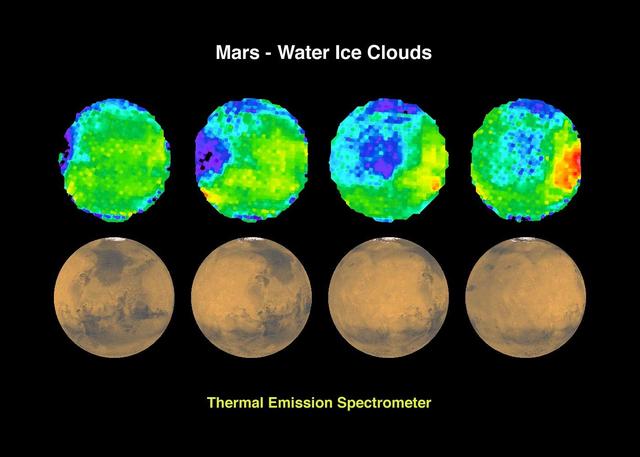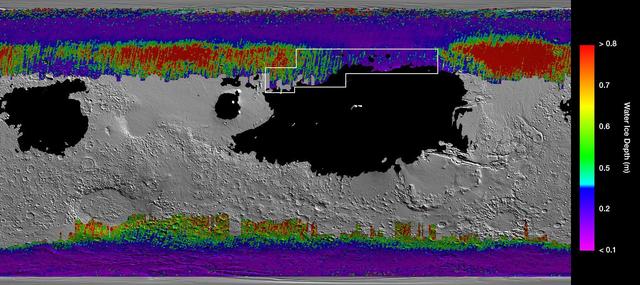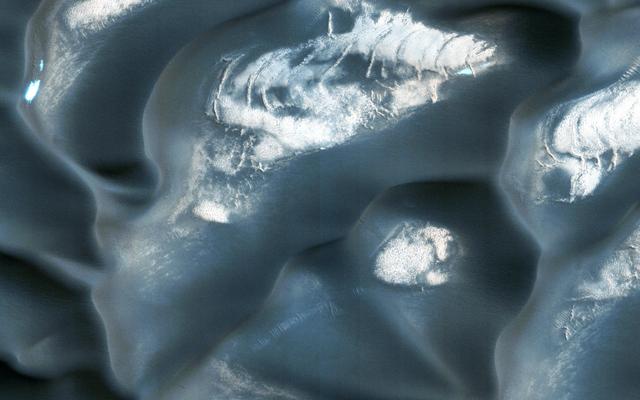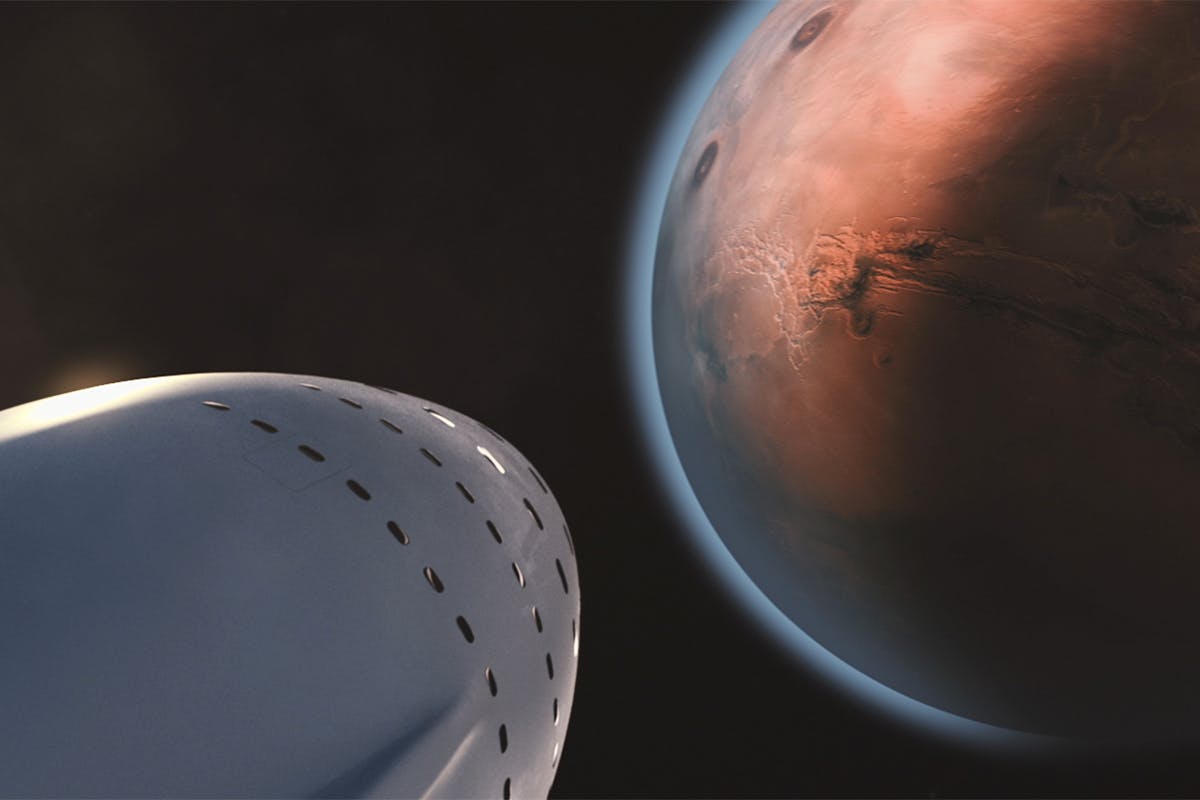Mars has always captured our imagination, and one of the biggest questions about the Red Planet has been whether it holds water – an essential ingredient for life and future exploration. Recent discoveries have confirmed that ice deposits on Mars exist beneath the surface, holding immense potential for future missions, human exploration, and even rocket fuel production.
But where exactly is this ice, how was it found, and what does it mean for human missions to Mars? Let’s explore the facts behind this Martian mystery.
The Basics: Mars’ Surface and Atmosphere

Mars is surely the planet of the extremes. So, before diving into Mars’ water ice deposits, it’s completely essential to understand the planet’s surface and atmospheric conditions, which directly impact how and where ice forms.
Here are some facts you must know about Mars’ surface and atmosphere:
- Mars is more than just red – The planet’s surface displays shades of brown, gold, and tan. The iconic reddish hue comes from iron-rich dust that has oxidized, or rusted, over time, covering the planet.
- Similar land area to Earth – Even though Mars is about half the size of Earth, its surface area is nearly the same as Earth’s dry land, meaning there’s plenty of room for future exploration.
- Valles Marineris – A Giant Canyon – This canyon stretches over 3,000 miles (4,800 km), making it 10 times longer than Earth’s Grand Canyon.
- Olympus Mons – The Biggest Volcano in the Solar System – Mars is home to Olympus Mons, a volcano three times taller than Mount Everest, with a base the size of New Mexico.
- Signs of an ancient watery past – Mars once had flowing rivers, lakes, and massive floods. Today, liquid water doesn’t last on the surface, but water ice deposits remain under the soil and in the polar regions.
- Mostly carbon dioxide – Mars’ atmosphere is made up of 95% carbon dioxide, with small amounts of nitrogen and argon, making it impossible to breathe without assistance.
- Extreme temperature swings – Mars can be as warm as 70°F (20°C) near the equator but drop to -225°F (-153°C) at the poles. The thin atmosphere struggles to hold heat, leading to extreme temperature changes.
- Dust storms and hazy skies – Because of fine dust suspended in the atmosphere, Mars’ sky appears red or orange instead of the familiar blue on Earth. Powerful dust storms can last for months, sometimes covering the entire planet.
- No protective magnetosphere – Unlike Earth, Mars has no global magnetic field to shield it from solar radiation. However, traces of magnetized rock in the southern hemisphere suggest Mars once had a protective field billions of years ago.
Naturally, these surface and atmospheric conditions play a key role in where water ice forms on Mars and how accessible it is for future exploration and human missions. A key factor is temperature – colder regions, particularly at the poles, help preserve ice, making them the most likely locations for stable ice deposits.
How Was Water Ice on Mars Discovered?
The search for water ice deposits on Mars dates back decades, with multiple space agencies using radar instruments, heat-sensitive instruments, and high-resolution imaging to locate and analyze potential ice reservoirs.
Scientists have detected frozen water using data from orbiters such as NASA’s Mars Reconnaissance Orbiter (MRO) and ESA’s Mars Express, which have mapped large underground ice reserves.
Here are the key discoveries:
- 2002: Mars Odyssey’s Gamma Ray Spectrometer – NASA’s Mars Odyssey spacecraft first detected large reservoirs of ice beneath the Martian surface by measuring hydrogen abundance, a strong indicator of frozen water.
- 2008: Phoenix Lander Confirms Ice – The Phoenix Mars Lander directly uncovered and analyzed water ice deposits in the northern hemisphere, confirming the presence of frozen water near the surface.
- 2018: Ice Cliffs Discovered – A study using data from the Mars Reconnaissance Orbiter revealed massive cliffs of exposed ice, suggesting that near-surface ice could be accessible for human missions.
- 2020: Buried Ice at the Equator – ESA’s Mars Express detected buried water ice near the Martian equator, an unexpected discovery since most previous ice detections were in the Martian poles.
- Starting in 2017: SWIM Subsurface Water Ice Mapping project – Scientists confirm the presence of water ice on Mars by combining data from multiple remote sensing instruments. Since no single tool can directly detect ice beneath the surface, they look for clues like high hydrogen levels, radar reflections, and temperature changes in the soil. When multiple datasets point to ice in the same location, confidence in its presence increases.
One of the best confirmations comes from recent meteorite impacts, which have unearthed fresh ice from below the surface. These discoveries help validate ice maps, showing where ice is most likely to be found and how accessible it might be for future exploration and resource use.
These amazing findings have revolutionized our understanding of Mars’ water reserves and their potential for human exploration – and sustaining long-term missions.
Where is the Ice on Mars?

Water ice is found in many locations across the Martian surface, and some deposits are more accessible than others. Scientists have mapped the amounts of water ice using radar instruments and heat-sensitive instruments, leading to a better understanding of where future explorers might extract this critical resource.
Major Ice Deposits:
- Northern Hemisphere: Thick layers of frozen water exist in the mid-latitudes, particularly in impact craters and beneath layers of regolith. These deposits could serve as a critical resource for future explorers, reducing the need to transport water from Earth.
- Southern Hemisphere: Ice deposits have been confirmed beneath the surface, but they are more difficult to access due to the region’s rough terrain. This makes their extraction challenging, requiring advanced drilling technologies.
- Martian Poles: The north and south poles contain vast amounts of water ice, similar to Earth’s polar caps, but these regions experience extreme temperatures and seasonal changes. This makes them less ideal for human missions.
- Near the Equator: Recent findings suggest buried water ice may exist in equatorial regions, making it more viable for human missions due to moderate surface temperatures. If these sources are accessible, they could hugely benefit future colonization efforts.
As you can guess, these discoveries could be game-changing for future missions to Mars since they are providing essential resources for astronauts – but also unlocking clues about the planet’s history and habitability.
Why Ice Deposit Location Matters

Finding water ice at lower latitudes is especially important for future Mars missions. The closer an ice deposit is to the equator, the better suited it is for human exploration and long-term habitation.
Here’s why:
- More Solar Power – Equatorial regions receive more sunlight, making solar energy a more reliable power source for bases and equipment.
- Warmer Temperatures – These areas are less extreme compared to the freezing conditions at the poles, reducing the strain on habitats and machinery.
- Thicker Atmosphere – While Mars has a thin atmosphere overall, it is slightly denser at lower latitudes, which helps slow down spacecraft during landing.
- Easier Takeoff – A denser atmosphere and lower altitude terrain could make launching return missions more efficient.
If ice deposits in equatorial regions are accessible, they could provide a crucial water source for astronauts without requiring complex extraction in extreme environments, making long-term missions far more feasible.
Evidence of Liquid Water on Mars
While most of Mars’ water is locked in ice, NASA scientists have found strong evidence that liquid water occasionally flows on the surface.
In 2015, NASA’s Mars Reconnaissance Orbiter (MRO) detected recurring slope lineae (RSL) – dark, narrow streaks that appear to flow down steep slopes during warmer seasons. These streaks were later confirmed to contain hydrated salts, suggesting that briny liquid water could exist on Mars today
Here are the most important questions answered:
- Where it was found: RSL features have been observed in multiple locations, including Hale Crater and Garni Crater. Scientists detected hydrated salts in these streaks, supporting the idea that briny liquid water is responsible for their formation.
- Why it matters: The discovery provides compelling evidence that Mars isn’t entirely dry – water might still play a role in shaping its landscape today, increasing the possibility of microbial life in some regions.
- How it works: The presence of perchlorates, a type of salt, lowers the freezing point of water, allowing liquid brine to form even at extremely low temperatures. These hydrated salts absorb water from the atmosphere, which could explain the seasonal appearance of RSL.
While early studies suggested RSL was caused by flowing water, later research in 2017 raised doubts, proposing that dry granular flows of sand may be responsible instead. However, the presence of hydrated salts still supports the possibility of some water-related processes playing a role in shaping these streaks.
This discovery has huge implications for human exploration, as future missions may be able to extract and use this water for survival, drinking water, and even fuel production through electrolysis – splitting water molecules into hydrogen and oxygen for rocket fuel!
Mars Exploration and Ice Utilization – What the Future Holds?

Finding ice deposits on lower latitudes on Mars is a huge scientific breakthrough, but it’s also a game-changer for future space missions. These frozen reservoirs could provide drinking water for astronauts, rocket fuel for deeper space travel, and even clues about Mars’ past climate!
As space agencies refine landing sites and develop new tools to detect and extract near-surface ice, the dream of a human presence on Mars is becoming more and more realistic – and the big question now is when.
No matter when it happens, one thing is clear: Mars is holding onto secrets that could change the way we perceive and explore the entire cosmos!